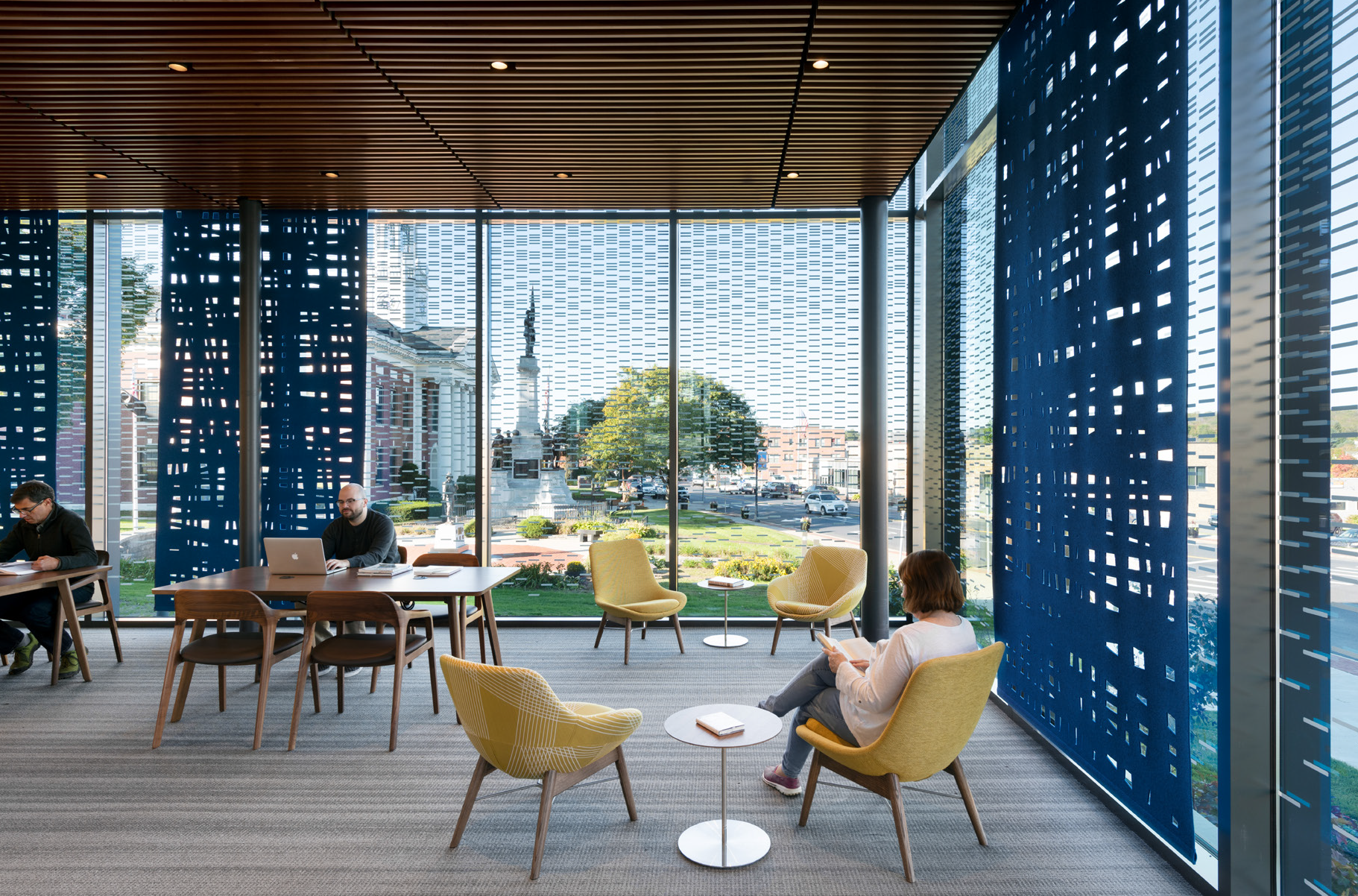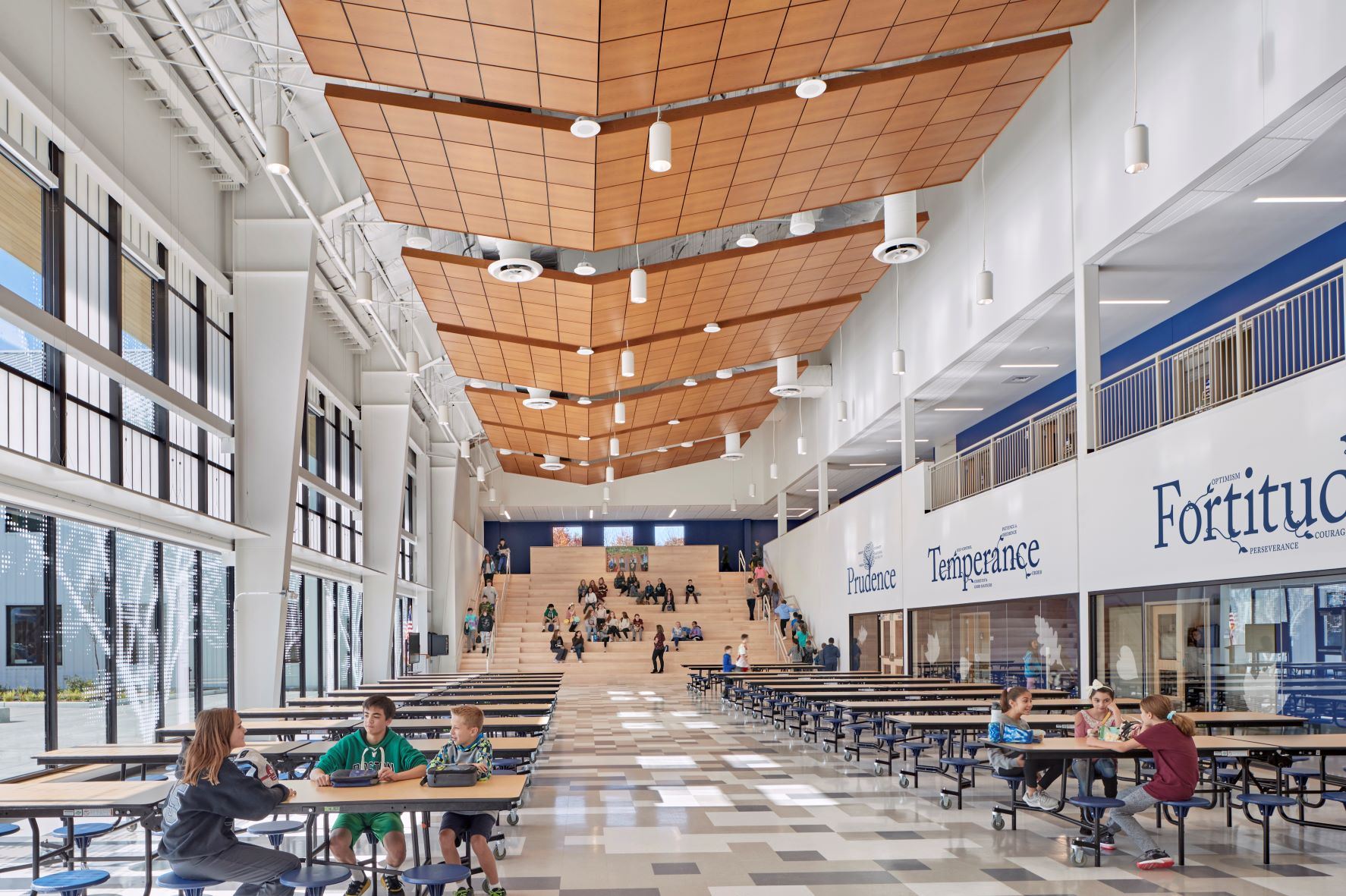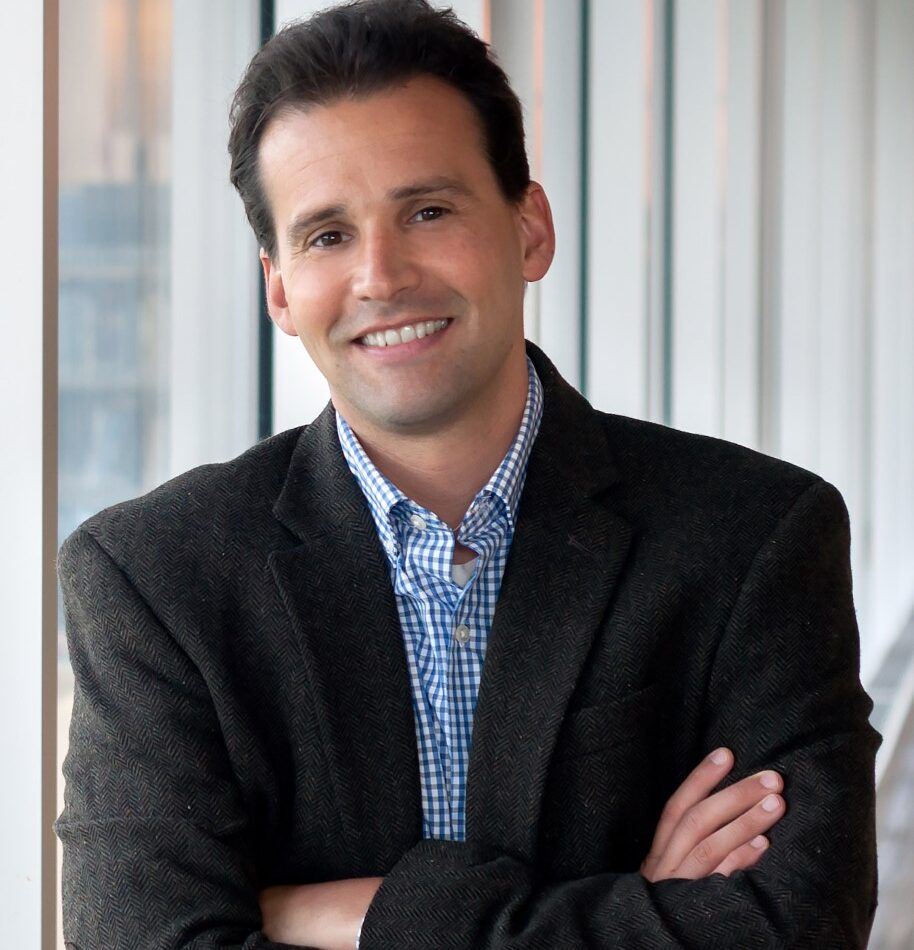- HOME
- News/Events
- News
|
|
AIACM Welcomes New Board Member: Meet Alicia Songer AIA Central Massachusetts would like to welcome Alicia Songer as a new board member and part of the Emerging Professionals Committee. Alicia has always been rooted in Central Massachusetts where she grew up and currently lives with much of her family nearby. She began her career working as an architect in Worcester, recently worked as a sustainability consultant in Boston, and has just started a position as an associate at Saam Architecture where she is excited to continue contributing to the Central Massachusetts built environment she calls "home." When not researching sustainable building practices, she enjoys being in nature, hiking the many trails she has right in her backyard, and disc golfing with her husband throughout the area. |
Letter from AIA Central Massachusetts President, Jack Moran Dear Members,
The end of the year brings with it the conclusion of my term as President of the Board of Directors, as well as my tenure on the Board. I find myself reflecting on another successful year for our organization. The year started with completing the Component Accreditation process with AIA National – no small task! I’m happy to report that AIA National approved our accreditation for another three years. Once again, we organized a busy calendar of events, resulting in a total of 19.5 learning units offered. Events ranged from lunch and learns focused on specific building products to professional development programs like “2023 Commerical Stretch and Specialized Code,” to our annual design film night. This year’s film was “Olmstead and America’s Urban Parks,” which was presented in partnership with Preservation Worcester, and included a presentation by Alan Banks, who oversaw the historical interpretation of Frederick Law Olmsted National Historic Site in Brookline, Massachusetts for nearly 30 years. A complete list of programs we offered can be found at our website (www.aiacm.org).In October we held our annual Design Awards Dinner at the College of the Holy Cross. Eleven projects were presented with awards, including four by Central Massachusetts firms. The dinner and awards ceremony was preceded by a cocktail reception and tour of the Diller Scofidio + Renfro-designed Prior Performing Arts Center, and was attended by more than 80 people, making it one of our biggest events ever! We awarded two scholarships again this year. Namhi Kwun, a student at Massachusetts Institute of Technology, received a scholarship for $3,000, and Marco Legros attending Worcester Polytechnic Institute is the recipient of a $1,000 scholarship. These scholarships were made possible by a partnership between AIA Central Massachusetts and Pella, as well as AIA National, who matches the chapter’s commitment. Through Pella’s Pella + Purpose Program, we raised more than $4,000 to help fund our scholarship program. I would like to thank Steve Lewis, AIA, who will also be departing the Board of Directors after serving for ten years, including serving a term as President. Steve’s contributions to the Board and chapter cannot be overstated – nor can my appreciation of his support and witty humor. Thank you also to the current and returning Board members, Sean Brennan, AIA, Vice President (LPA|A), Anthony DiManno, AIA, Secretary (LPA|A), Navneet Magon-Anand, Associate AIA (Design Veritas) and Megan Rajner, AIA (Emerald House Studio). We are a small group, so everyone wears many hats and serves on multiple committees. We also welcomed our newest Board member, Alicia Songer, AIA who has already hit the ground running. Finally, it is with great confidence that I transition leadership of the Chapter to our incoming President, Sean Brennan. Sean joined the Board in 2021 and has been an enthusiastic leader in the organization from day one. He has been the best partner a president could ask for, and on a personal note, I am very proud to call him a friend. I know Sean will lead the Chapter to even greater heights. With best wishes for an even more successful 2024, Jack Moran |
AIACM 2023 Scholarship Recipients Announced AIACM is pleased to announce the scholarship recipients for 2023: Namhi Kwun, a student at Massachusetts Institute of Technology, received a scholarship for $3,000, and Marco Legros attending Worcester Polytechnic Institute is the recipient of a $1,000 scholarship. The scholarships are made possible by a partnership between AIA Central Massachusetts and Pella, as well as AIA National, who matches the chapter’s commitment. Thanks to this substantial matching program, AIACM was able to award two scholarships this year.To qualify for consideration, scholarship applicants must submit an essay and letter of recommendation. Here is what the two students’ recommendation letters shared about the candidates: "I can attest that Namhi is an excellent and talented designer skilled at both architectural and urban design who is also capable of mentoring less experienced designers. Namhi stood out amongst the design teaching assistants that have worked for me in her interest in on questioning how planning, design, and public policies interact with real estate markets to contribute to the inequities in our contemporary cities. I believe Namhi’s goal is to apply the interdisciplinary training she is acquiring at MIT to uplift marginalized urban communities especially in her native South Korea. Namhi is an earnest and highly motivated student with great potential. Her personal background and social convictions will continue to diversify and elevate the quality of the intellectual discourses across the Architecture and Urban Studies departments as she continues her studies. “Academically, Marco is among the top 10% undergraduate students I have encountered so far in my career. He is hardworking and brilliant. He has also done a phenomenal job in his academic work, and in my Architectural Design Studio, where he designed a home studio for an Artist in his first design studio. He has designed an excellent project, Museum of Emotion, in design studio III, as well. Marco did exceptionally well in his project by creating an outstanding idea, materializing a concept, and figuring out all the details. During my interaction with Marco, he showed up on time with a big energetic smile on his face. Marco is also very self-motivated in his academic and professional work. With this level of interest in design and engineering, I believe he is on the right path to success." |
AIA National Leadership Conference 2023: Report to our Members Recently, I had the pleasure of representing AIA Central Massachusetts at the annual AIA Leadership Summit (formerly Grassroots) in Washington, DC. The Summit was four days filled with workshops, educational lectures, and field trips. The focus was on two things: learning how to better serve our members, and advocating for pro-architect policies at the federal level. We devoted one entire day to touring Capitol Hill and meeting with legislative staffers. I was fortunate enough to speak with staff members from the offices of Rep. Jim McGovern and Rep. Richard Neal – who represent numerous cities and towns in Central Massachusetts – as well as staffers from the offices of both Sen. Elizabeth Warren and Sen. Ed Markey. Along with a few other architects, we expressed to these offices the importance of design freedom and resilient infrastructure to our industry. The AIA supports a bill currently in Congress known as the “Democracy in Design Act,” which was drafted in response to a 2020 Executive Order mandating the use of Classical-style architecture in federal buildings across the country. This bill would codify the otherwise long-standing government practice of soliciting public, transparent design proposals and receiving community input, without expressing preference for one particular style over another. As architects, we believe that architecture should always be a collaborative endeavor between architects, clients, and the community, not something to be dictated by bureaucracy. Enacting this bill will ensure greater levels of transparency and protect the people’s voice. Another important bill about to be introduced and supported by the AIA is known as the “Resilient AMERICA Act.” The focus of this bill is to improve the resiliency of America’s built environment by bringing more communities up to current building codes and will also provide more funding for the Building Resilient Infrastructure and Communities (BRIC) program. This program provides funding for local communities to improve vulnerable buildings. In recent years, the United States has spent over $700 billion on disaster clean up alone. Sadly, we know that environmental disasters are no longer a matter of “if,” but “when.” By spending on preventative improvements to better weather storms, floods, fires, etc., we can reduce the cost – in both lives and dollars – when the next climate disaster strikes. We are fortunate to have congressional representation that is also ideologically in favor of these bills. However, there are a lot of competing priorities in Congress, and only so much time and effort available to passing bills during each session. If any member believes these endeavors to be important, I would strongly encourage them to contact the office of their Congressmen and Senators, to make sure they know that these should be priority issues. Back in the conference hall, I attended many informative workshops. A key topic that came up repeatedly was generational change in our industry. As we look to recruit and retain the next generation of architects – “Gen Z” – it will be important for established firms to understand what they value in an architectural career, and how that may align or differ from the values of other generations. Members of Gen Z view remote work and the flexibility it entails as the norm, rather than the exception. Some have recognized that their optimal working time is very early, or very late, or otherwise outside of the conditions that, until recently, would’ve been common in a typical “9 to 5” office. To survive as this highly diverse generation forms more of our practicing body, more established architects will have to learn to balance the needs of the firm with the goals of the young staff, or risk missing out on the energy and innovative thinking they are ready to provide. Finally, we brainstormed ways that our board, and others like it, can provide more creative programming to our members. We are excited to explore partnerships with different products and industries to continue to provide our members with important industry connections and learning opportunities. Maybe just as important, we look forward to social events where we get together as friends and colleagues to celebrate our work and inspire students and emerging professionals. I want to thank AIA Central Massachusetts for the opportunity to represent the chapter at this event, and I’m excited to see what we can do together as a community. Anthony DiManno Secretary, AIA Central Massachusetts | 
|
Tour of the Prior Performing Arts Center at Holy Cross In a joint program sponsored by AIA Central Massachusetts and the Worcester Chapter of the Construction Specifications Institute, local architects, students and construction professionals were given an inside look at the new Prior Performing Arts center at the College of the Holy Cross in Worcester last month. Close to 50 people attended the discussion and tour through the building led by designers from Diller, Scofidio, Renfro, architects from Perry Dean Rogers, and members of the construction team from Dimeo Construction. The 84,000 square foot building opened this past Fall and includes flexible learning, work, and performance spaces, an art gallery, as well as a variety of outdoor spaces. You can read more about the space and the designers’ vision: the project was featured recently in Architectural Record and the Architects Newspaper. |
|
AIACM 2022 Scholarship Recipients Announced AIACM is pleased to announce the scholarship recipients for 2022: Daynah Guyton, a student at Worcester Polytechnic Institute, received a scholarship for $1,000, and Stephany Medina attending Wentworth Institute of Technology is the recipient of a $2,000 scholarship. The scholarships are made possible by a partnership between AIA Central Massachusetts and AIA National, who matches the chapter’s commitment. Thanks to this substantial matching program, AIACM was able to award two scholarships this year. To qualify for consideration, scholarship applicants must submit an essay and letter of recommendation. Here is what the two students’ recommendation letters shared about the candidates: “Daynah has proven to be a very well-rounded individual with many interests and hobbies alongside of her career aspirations. She is charming when discussing her hobbies and thoughtful when sharing her ideas. She has applied herself fully to all the tasks we have given her, which range from graphic renderings to sketching ideas for architectural interventions. She has an intuitive understanding of spatial relationships and a creative imagination – both of which will serve her well in the architecture world. She is also sensible, thorough, and whip smart, which doesn’t hurt either!” |
|
AIACM Celebrates Design Excellence at 2022 Awards Dinner AIACM hosted its annual Excellence in Design Awards dinner earlier this month, once again celebrating architecture in our region and the talented people behind these exceptional projects. This year we received more than 30 submissions encompassing a broad range of project types, from schools and libraries to residential and outdoor spaces and structures - the jury took on the difficult task of selecting just eight projects for recognition. Our jury was comprised of three accomplished architects from outside of Central Massachusetts: Stephen Shreiber is from the Western Massachusetts AIA; Tolya Stonorov is from AIA Vermont, and John Priestley is from AIA Maine. You can learn more about our jurors here. We were fortunate to have Mr. Shreiber share the jury's thoughts at the awards presentation, giving attendees some insight into the projects as well as the selection process.
The winning projects are: Honor Award Oudens Ello Architecture Gladys E. Kelly Public Library Honor Award Arrowstreet Benjamin Franklin Classical Charter School
Merit Award Studio InSitu Architects Studio Apartment
Merit Award Paul Lukez Architecture Deleeuw House
Merit Award SMMA Templeton Elementary School Citation Award Studio InSitu Architects Azucar Pavillion
Citation Award Abacus Architects + Planners Taft Public Library
Honorable Mention Studio InSitu Architects Triangle Common |
|
|
A Current Student's Reflection on her Architecture Education What is architecture school like in 2022? How are the studio courses structured? What kind of projects do architecture students of today work on? Architecture schools of 2022 can be influenced by many factors: digital and physical tools, history, sustainability, professional experience, outside activities, and connection with others. My name is Abby McCue, and I am from Northborough, MA. I am a rising third-year architecture student at North Carolina State University in Raleigh, NC. I am also pursuing minors in music composition and landscape architecture. In addition to my education, at NC State I participate in multiple activities to build my leadership, teamwork, and time management skills. Some of the organizations that I am part of include AIAS, my sorority, and an honor fraternity. Outside of school, I run a small Etsy shop, do freelance graphic design, and am a childcare provider. These different opportunities and activities help shape my unique experiences in architecture school. Being exposed to multiple avenues of creativity has allowed me to learn more about my interests and approach to the design process. I have found that exploring different areas of interest is helpful in the broad scope of architecture, as it is a cross-disciplinary field. |
|
| Reflecting on Sustainability in Architecture on Earth Day 2022
Earth Day is a day we are called upon to focus on environmental sustainability. Sustainability, in the architecture and building industry, is becoming more significant as the urban built environment is responsible for 75% of annual global GHG emissions: and buildings alone account for 39%. When the first Earth Day took place on April 22, 1970, air pollution was a major problem in most US cities. Now, a half century and a geologic age worth of carbon later, global carbon emissions are up about 90%, and we are facing a new crisis. On this earth day, people and companies are taking time to reflect on the beauty of our planet, and recognizing the importance of taking care of it for future generations. |
Toward Carbon Positive Architecture Educational Program to be Held at WPI on April 6 at 5pm Carbon positive and net zero energy buildings are a cornerstone of reversing runaway greenhouse gas emissions. Join the Central Massachusetts AIA for an educational session that will look at lessons learned from more than a decade in net-zero construction and its evolution from mission-driven clients to potential mass market adoption. Blake Jackson (pictured, right), AIA/LEED Fellow, US Northeast Sustainability Leader from Stantec Boston will present two case studies of recent projects, as part of his presentation: 1) the National Renewable Energy Laboratory in Golden, CO (a LEED Platinum, 2011 AIA COTE Top 10 Award winning project), and 2) Evolv1, a developer core/shell office building in Waterloo, Ontario (LEED Platinum and Canada’s 1st verified Carbon Positive Building – 2018). |
|
Letter from AIA Central Massachusetts President, Jack Moran Dear AIA Central Massachusetts Member, Happy New Year! We begin 2022 with cautious optimism that it will bring back a sense of normalcy – even if that means a new normal. Despite all the challenges that 2021 threw at us, we had a very successful year. We organized 8 programs, providing our members with the opportunity to earn 13.5 continuing education learning units, including: |
|
| AIACM Announces 2021 Scholarship Winner November 2021 - AIACM is pleased to announce that Brenda Hernandez is the recipient of the 2021 scholarship for $1,000, including $500 from the Central Massachusetts Chapter and a matching award from AIA National. A master of architecture candidate at Massachusetts Institute of Technology, Brenda is a first generation American from El Paso, TX. Brenda received her BA from Smith College in Architecture and Landscape Studies. She credits her liberal arts background with helping inform her designs and interest in interdisciplinary exploration. Each year the scholarship committee of AIA CM awards up to two scholarships to deserving architecture students. Congratulations Brenda and all the best at MIT this year! |
















